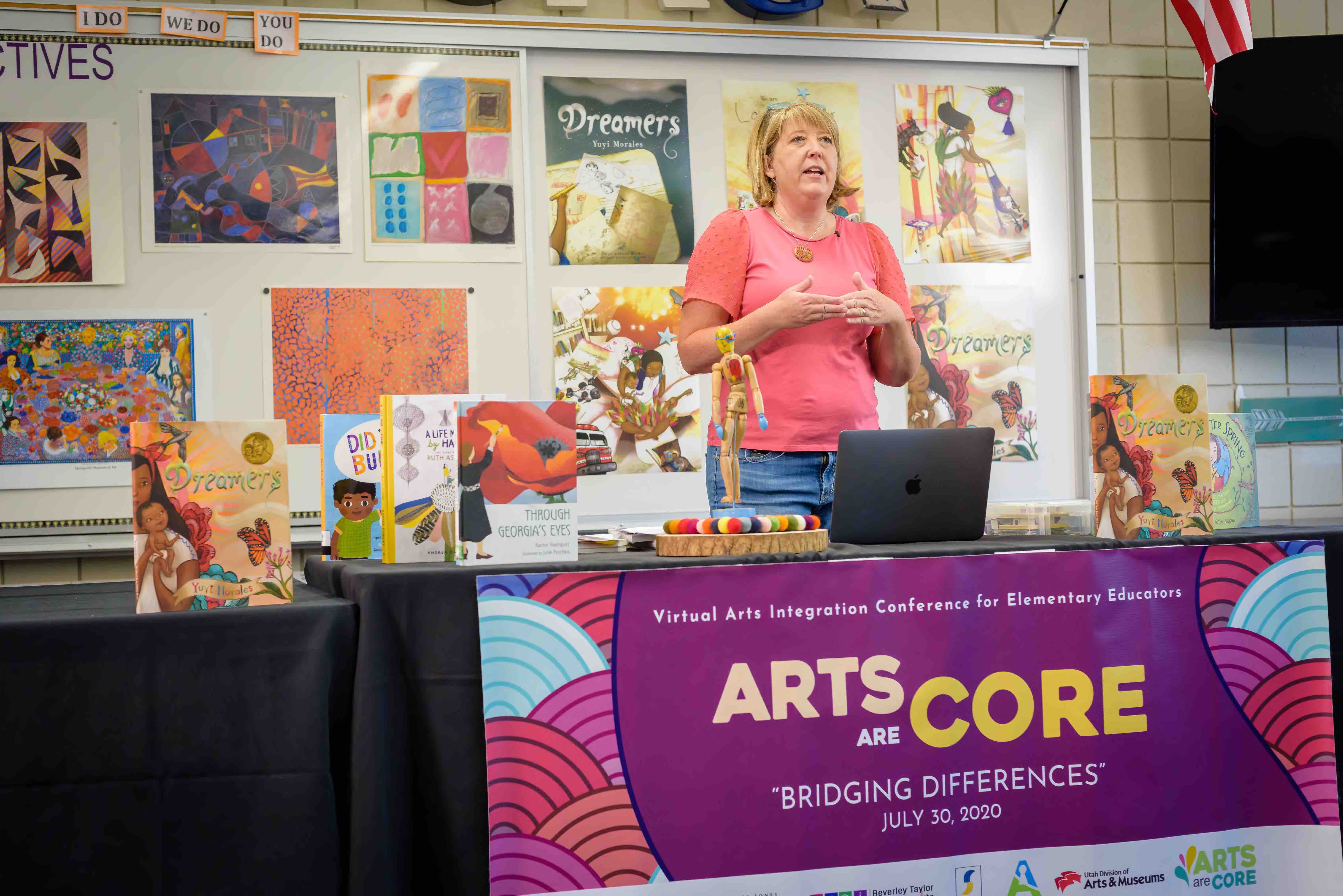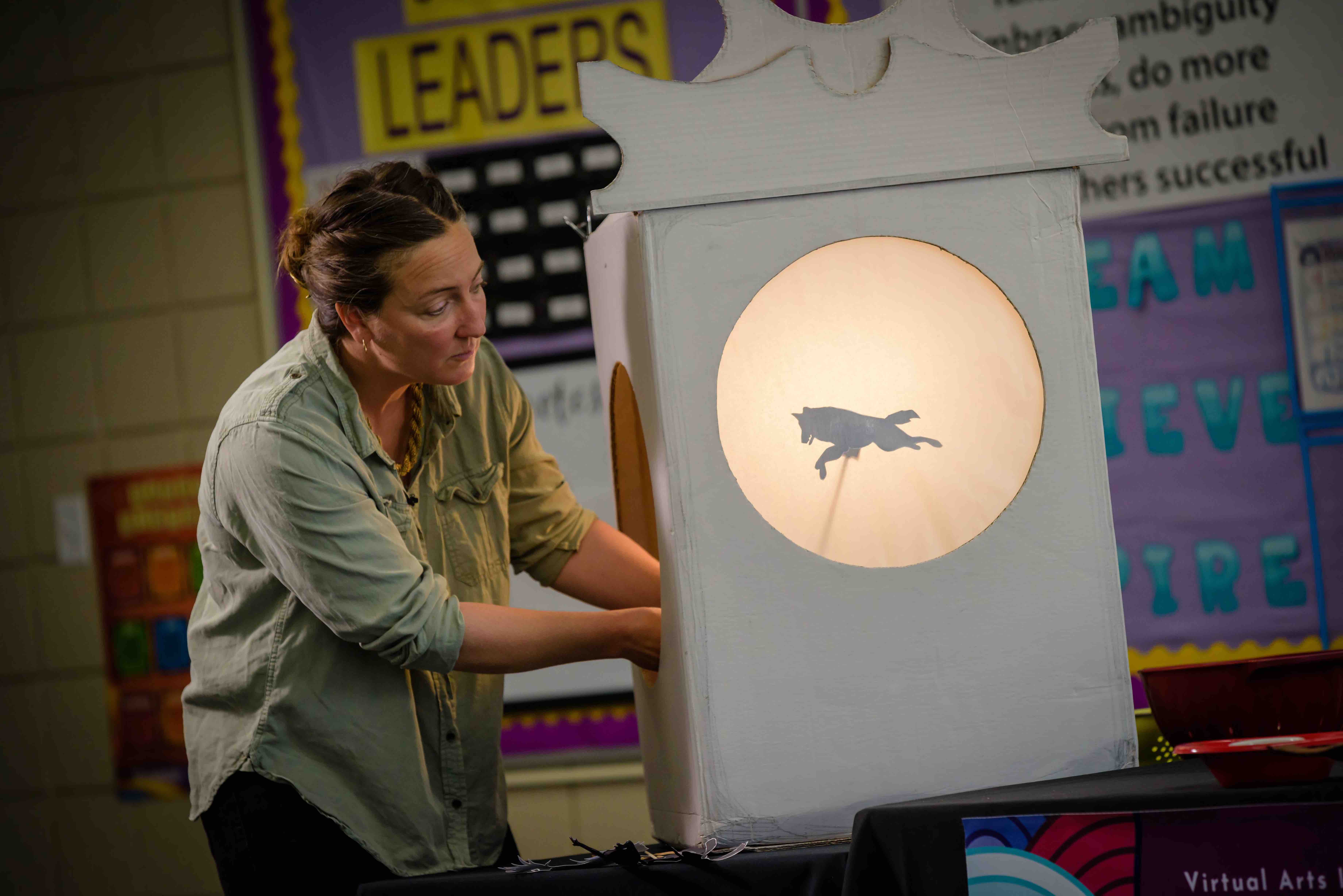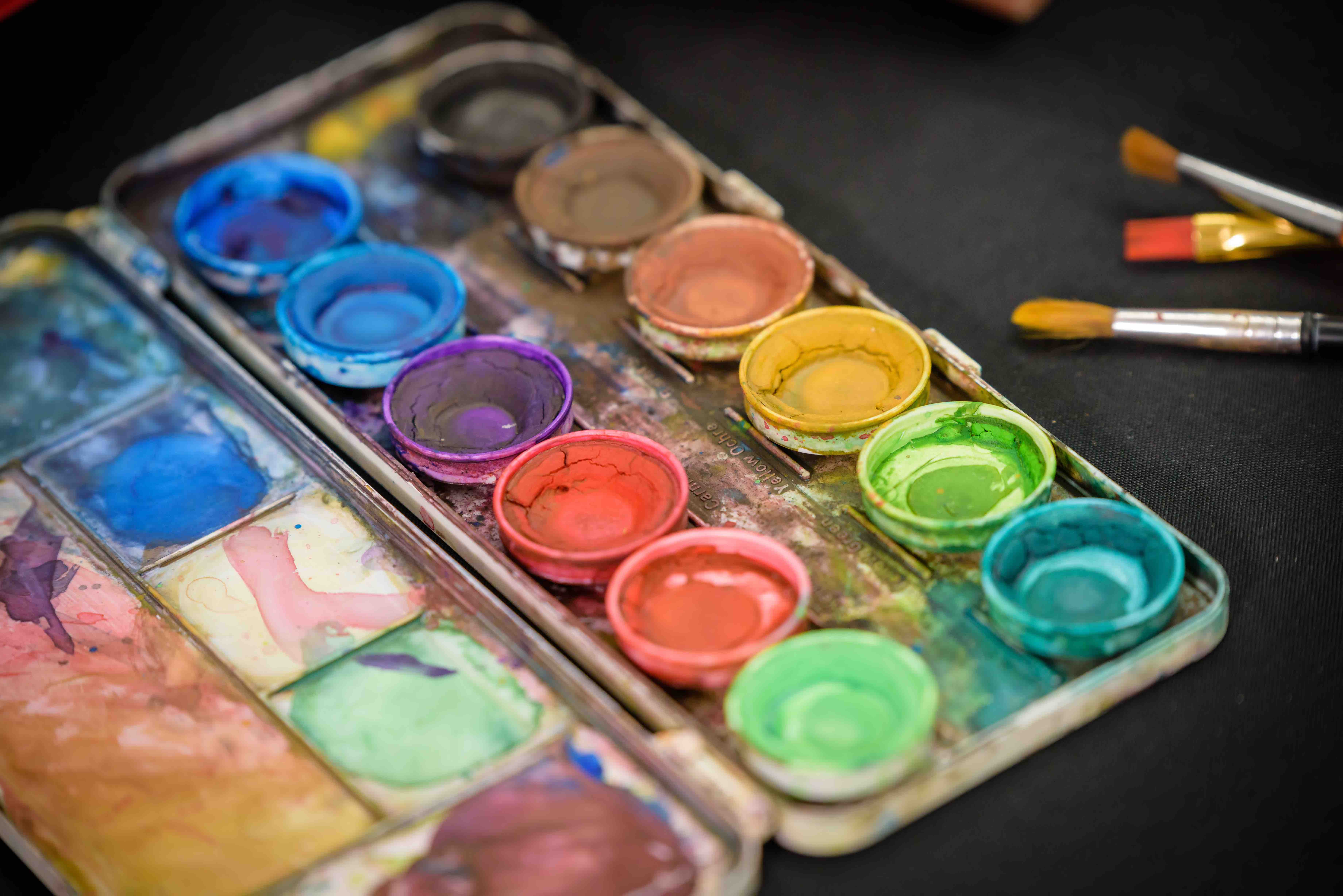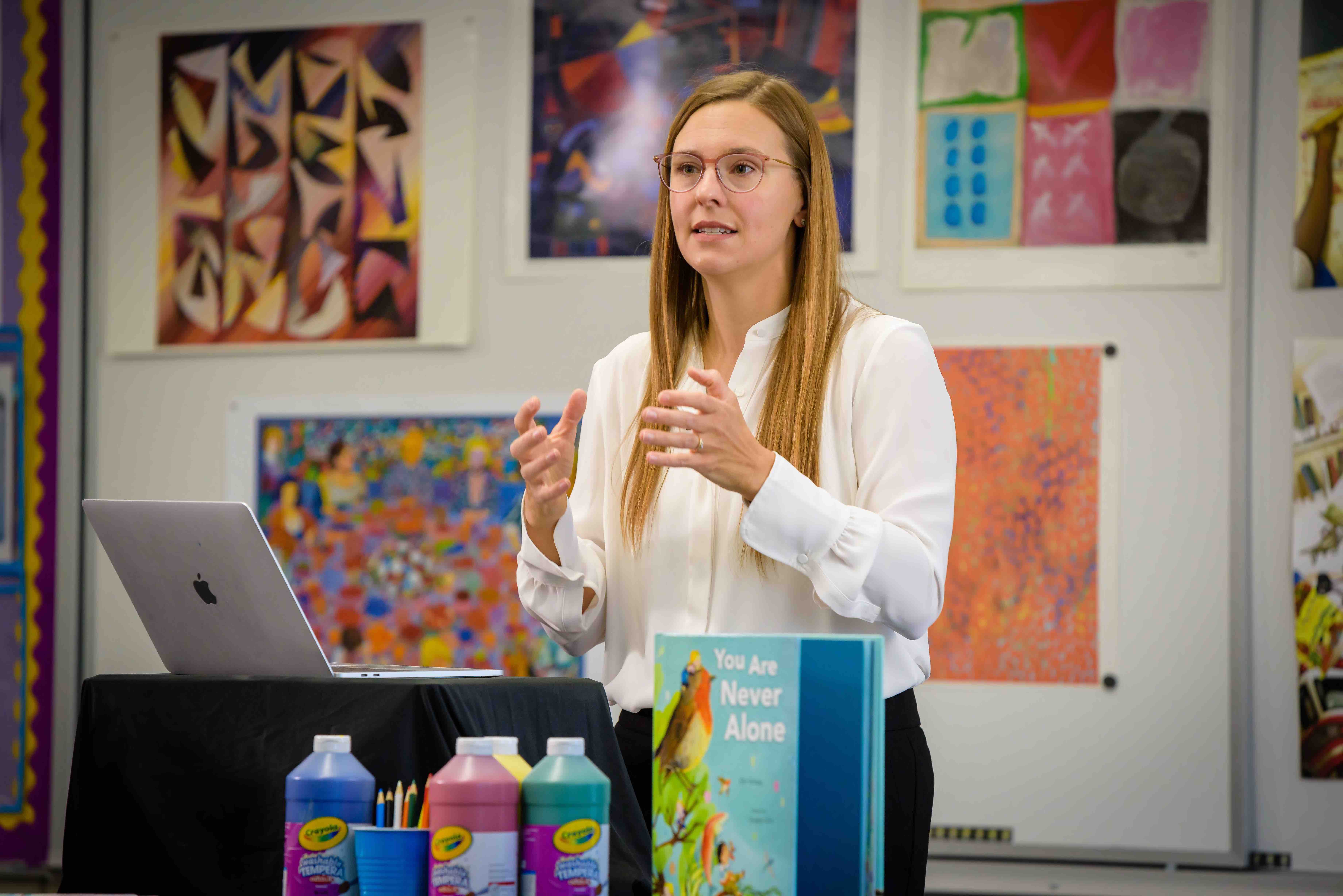Workshops




Telling Stories Through Poetry: A Bridge to Building Community
Glenis Redmond’s love of words has carried her across the country for two decades. She logs over 35,000 miles a year bringing poetry to the masses. This Road Warrior Poet, though steeped in Afro-Carolinian roots, speaks a universal tongue of love, loss, celebration, sorrow and hope. Her verse uplifts family, culture, and community. In Telling Stories Through Poetry: A Bridge to Building Community, Glenis traces her educational trek, and her origin story of poetry. Glenis will read tribute poems she has written for teachers who ignited her poetic fire. In the keynote presentation, Glenis makes the case for why and how to strengthen students' writer's voices through poetry. She shares both wisdom and strategies for how teachers can enrich their classrooms, schools and community with literature and poetry. Glenis urges and implores that poetry is for all.
Glenis Redmond
Praise Poetry: Poems of Origin
Glenis provides easy-to-use activities and instructions on how to write Praise Poetry. This literary method is an introductory poem form great for all ages. It is composed of metaphors and similes—forms of comparison relating to an object, a person, a color, or a feature in nature. Each line is a celebratory declaration, an invocation that acts as a cathartic affirmation as students place themselves on the continuum of their lineage. This workshop helps teachers work with students to build a stronger sense of agency and enable them to begin to write their origin story. Glenis will draw upon the rich lessons and unforgettable characters in Charlie Mackesy’s book, The Boy, the Mole, the Fox, and the Horse, and the parallels between the lives of people everywhere.
Aurora Hughes Villa
Collaborative Art Projects to Build Community
Collaborative art projects are a great way to promote community in your classroom and throughout the school (even during COVID). This workshop presents several creative, engaging, easily implemented visual art projects that will have your students, parents, faculty, administrators, and community involved and talking about art! Lesson specifics will be given and are adaptable for grades K-6.
Aurora Hughes Villa & Amanda Deliman
Building Bridges to Culturally Responsive Teaching
Arts integration is a natural pathway into culturally responsive teaching. In this workshop we will look at children’s literature as a springboard for arts-based projects that celebrate diversity and inclusion. Connecting through stories not only helps build community, but also provides spaces for children to show empowerment and demonstrate agency in ways that are personally meaningful. Attendees will come away with ideas of how to create a learning environment that cultivates empathy, fosters creative expression through the arts, and builds on culturally responsive pedagogical practices that celebrate personal histories and cultural traditions. Join us to take part in the power of story-telling through the arts.
Barry Stewart Mann
Mindfully Artistic: The Dramatic Power of Silence and Stillness
In Charlie Mackesy’s The Boy, the Mole, the Fox, and the Horse, the Mole shares, “I’ve learned how to be in the present. . . . I find a quiet spot and shut my eyes and breathe.” Mindfulness is crucial in the dizzying world we and our students live in, and drama activities that ask (allow) students to be still and silent give them the opportunity to develop and practice the skill of mindfulness through the paring back of speech and movement. In this workshop, we will look at three specific Drama strategies – Statue, Tableau, and Pantomime – that can be used across the curriculum, helping students to simplify, focus, and be mindful of themselves and the curriculum content. The Boy asks the Mole, “And then what?” “Then I focus.” “What do you focus on?” “Cake," said the Mole.
Bob Smith
Mapping the Wide World of SEEd: Where Science Meets Art
Learn to look at the world like a scientist and an artist. With recent changes to science teaching in elementary classrooms, it may be difficult to find where, when and how to teach the amazing arts connections that surround us in the wonderful world we live in. Join us for an artful session of exploring the Utah SEEd (Science with Engineering Education) standards, by drawing, mapping, and simplifying this new curriculum. Create and walk away with your own map that will help you understand how the standards weave together, as well as, other resources to summarize and explain the SEEd standards. We will also share some fun ideas and lessons that will help you and your students think like an artist and a scientist at the same time.
Arts Integration Across the Curriculum: Quick Tips and Resources for Meaningful Learning (K-6)
Come and learn simple and quick ways to include dance, drama, visual art and music in your classroom to help take learning to a new level. Explore simple strategies that connect drawing with literacy skills, dance with science and math, drama with social studies, and music to language arts. You will walk away with digital resources from each art form with lesson foundations that connect simply, but deeply, to nearly every classroom content. Come ready to draw, observe, move and act together. When students learn through arts integration, their brains and your classroom will light up with confidence, creative perspectives, deep discussions and memorable connections.
Drue Bullington
Draw, Write, Sing, Drum, and Play from Your Heart
Guided by the invitation to wonder and create from Charlie Mackesy, author and illustrator of "The Boy, the Mole, the Fox and the Horse," this session will explore how each individual is impacted by the treasure trove of elemental drawings and gentle storytelling this book contains. Each participant will be guided to their own unique takeaways from the experience through playfully writing, drawing, singing, drumming, moving, and creating their own way of expressing the way the book impacts them personally. There will also be a structure offered for how to engage students in a similar way through any number of artistic outlets. Let the beauty of this gem of a book, the centerpiece of this conference, be a bright spot in the future for you and your students!
Moon Phase Fantasia
This session will welcome and embrace everyone's personal knowledge of the moon, connecting to core science standards, and invite you to see the moon in new ways through an artistic music and movement discovery process. Have a small hand drum, or at least something small and round handy for our workshop! Together we'll experience a poem by the American writer, Emily Dickinson, set to music and then edge into an exploration of moon phases through movement, hand drumming, and rhythmic building blocks. The moon and its many phases will playfully come alive through poetry, song, movement, and hand drumming!
Janni Richards
Introduction to Music Integration
Explore a variety of tried-and-true methods to integrate music into the general education classroom. We will discuss successful strategies for classroom teachers and music teachers to support one another on their journey into arts integration. Participants will leave this session with several music integration lesson ideas that can be used in the daily classroom. Come learn how music integration can bolster student engagement and enrich learning. If you have experience with this, come prepared to share an integration idea that has worked for you!
Kimiko Warner-Turner
How Tableaux, Writing, and Listening Strategies Can Bring About Positive Social Change: Social Justice Practices for Any Age
Workshop participants will connect themes in the anchor story (The Boy, the Mole, the Fox, and the Horse by Charlie Mackesy), to Image Theatre to explore how the imagination and body can improve the world around us. Image Theatre is an acting technique used to create frozen pictures or tableaux. Workshop participants will explore several different variations using this drama strategy. Teachers can quickly reveal issues students want to solve, show interventions, and create solutions in an aesthetic space. Participants will receive a PowerPoint presentation and handouts to teach this social justice technique; to dream about a world filled with kind actions with your students.
Laura Hawley
Artist Books: Gateway to Integration and Learning
Learn how to engage your students in science, language arts and visual arts concepts through bookmaking. With a focus on pop up books, attendees will integrate curriculum standards exploring how these fun and simple forms easily connect with the core content while engaging students in the art making process. With the provided instructions, lesson ideas, and several different book form templates, teachers can bring these bookmaking activities back into the classroom to use as effective learning tools across all curricula. Lesson plan ideas will be provided, along with a wide array of simple book forms. Though lesson plans focus on science, the content is readily adapted to any subject.
Maele Shakespear
Building Community: Where Curriculum & Creativity Intersect
What is a community? What communities do I belong to? How do I contribute to those who are a part of my community? These are just a few of the questions we explored last year through art making at Mountain View Elementary in Brigham City, Utah. The visual art curriculum relating to community spanned a full year for grades K-5. This workshop will detail some of our experiences and what we learned over the course of that time including: collaged houses using textured papers that reflect diversity in our community, a collaborative weaving with messages of hope for the future, and in the context of the pandemic, connecting with a famous work of art in our Box Elder County community.
Rosina Didyk
Traditional Dance Hoe Ana, a Journey on the Sea, and What Happened Next
Learn a traditional Polynesian dance, build basic dance skills and connect these to language arts, science and social studies/geography. The traditional dance Hoe Ana from the South Pacific will be a starting point for exploring the art of storytelling through movement. Students will also be guided through creative improvisations to tell the story of “What happened next?”. Dress for movement and have a small “bubble” of open space to move in, as well as a chair close to your camera.
Telling Stories Through Body Shapes and Creative Movement
Learn how to explore shapes (still shapes made by dancers) and combine these with other dance skills to create original short movement phrases. These movement phrases inspired by the conference theme book, The Boy, The Mole, The Fox and The Horse, will be put together to create a community dance representing different aspects of the storyline.

